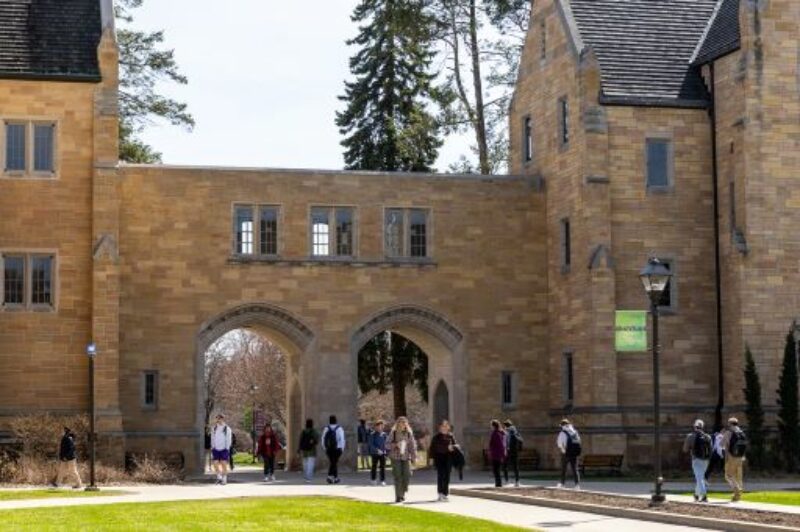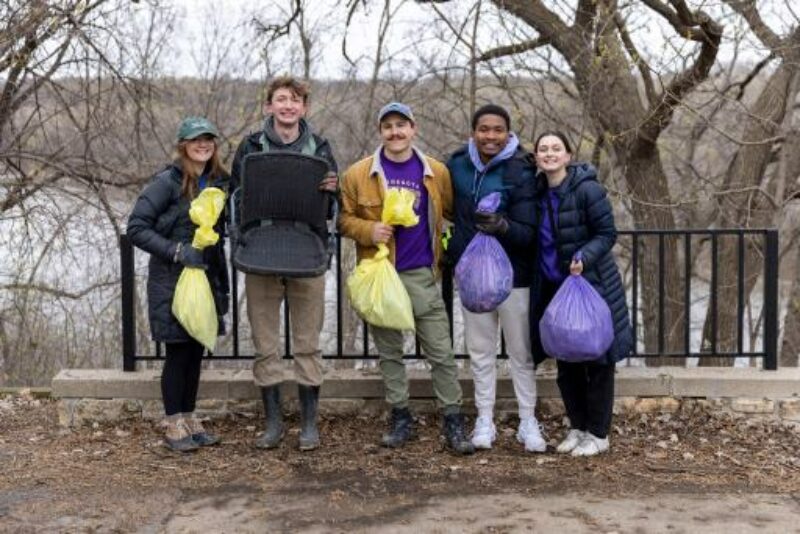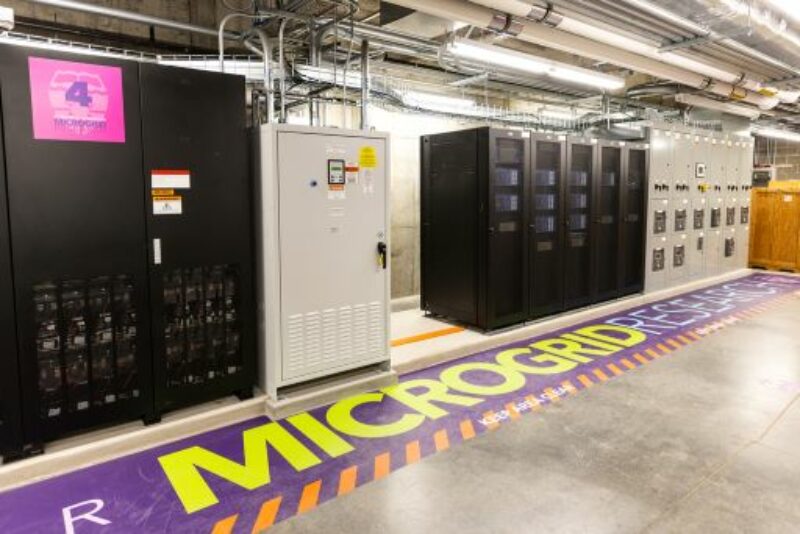
Situated along the Mississippi River in the heart of the Twin Cities, St. Thomas University is inspiring the next generation of stewards. At St. Thomas, caring for our natural spaces starts with empowering students. “We’re catalyzing university-wide engagement so that we can prepare students to be leaders in sustainability, no matter what field or path they go into. Every discipline, every person has something unique to contribute,” says Maria Dahmus, Director of the Office of Sustainability Initiatives and the Sustainable Communities Partnership program.
Sustainability Week
Sustainability Week is one way the St. Thomas community is celebrating care for place all across campus. During the week leading up to Earth Day in late April, Tommies from 25 different departments and student organizations celebrated what it means to care for our place. They each organized events like an office supply swap, food waste reduction in the cafeterias, art showcases, reusable products giveaways, and a free pop-up thrift store. These are all exciting ways for students to incorporate stewardship into their daily lives.
Sustainability Week is for students and led by students. Ariana Porcello, a senior studying Environmental Studies and Business Administration, has been instrumental in coordinating Sustainability Week for the past three years. She is part of the Student Sustainability Leader Program, a group that leads creative, hands-on programming to help students get excited about caring for our shared home. These student leaders coordinate workshops, waste reduction initiatives like Trash Talk and Scrape Your Plate, Bike Walk Roll to campus days, and much more.
“It’s all about peer to peer education,” says Porcello. “The framework for the Student Sustainability Leadership Program is putting a positive spin on being sustainable. Because especially for first year students, sustainability is not their first concern and can be a bit overwhelming. What we try to do is make sustainability easy, accessible, and exciting for students.”
Caring for Our Local Place
An annual Sustainability Week tradition — dating back nearly 30 years — is the Mississippi River Cleanup. Each year, Tommies come together on Earth Day to collect trash from a 2.6 mile stretch of Mississippi River banks, from Lake Street to Ford Parkway. This event is coordinated by the Sustainability Club, an active student volunteer group. In past years, volunteers have collected nearly 300 pounds of trash in a single cleanup.

Care for the Mississippi extends beyond the river banks, too: Engineers for a Sustainable World also hosted a trash pick-up and storm drain marking event during Sustainability Week. Tommie volunteers and community members stopped trash from reaching storm drains in the first place.
“A lot of people don’t know that storm drains drain directly into the river and are not treated before they do — no trash is filtered out,” says Maria Dahmus. This event creates awareness for the connection between our neighborhoods and the health of the Mississippi. Dahmus’ family is also part of the Adopt-a-Drain program: “Caring for the place where we live cares for the broader community,” she says.
Engineering a Sustainable Future
To kick off Sustainability Week this year, Tommies shared and celebrated faculty research across all disciplines through a Lightning Talk event. The first to take the stage was Dr. Mahmoud Kabalan, director of the Center for Microgrid Research. In his 5-minute lightning talk, Kabalan gave an overview of microgrids as localized, renewable energy systems that work in tandem with utility companies like Xcel Energy. Small communities — like a university campus, hospital, or neighborhood — are the perfect scale for a microgrid. The microgrid at St. Thomas helps the campus stay energy-resilient: the campus could go from “grid mode” to “island mode” if it needed to separate from the utility. In fact, Kabalan and his student team have demonstrated this hundreds of times over.
Kabalan’s engineering students are putting their theoretical knowledge into practice through microgrid research: “My students live the true creed of engineers: apply your knowledge to solve real-world problems,” says Kabalan. Their groundbreaking work is receiving national recognition, and they were recently awarded over $10 million in federal funding to advance their research in clean energy technology. Kabalan emphasizes that this technology is the future: “I believe that microgrids will be a big part of how we produce and consume electricity in the future.”
 For Kabalan, microgrids have the exciting potential to change the way we imagine energy systems. “I became fascinated by microgrid technologies during my PhD studies at Villanova University in 2012 and I continue to be very excited about this topic,” says Kabalan. He helps ignite this same passion in his students through their hands-on research.
For Kabalan, microgrids have the exciting potential to change the way we imagine energy systems. “I became fascinated by microgrid technologies during my PhD studies at Villanova University in 2012 and I continue to be very excited about this topic,” says Kabalan. He helps ignite this same passion in his students through their hands-on research.
In Minnesota, microgrids are both especially important and uniquely challenging. The shift between cold winters and hot summers means that a resilient energy system is not only important but life-saving. “Microgrids are one method to increase the reliability and resiliency of the grid during extreme weather events by enabling local power production and integrating energy technologies such as solar, wind, and fuel cells,” says Kabalan. By testing microgrids in this environment, Minnesota can be a leader and demonstrate that microgrid technologies can be applied anywhere.
Care Year-Round
At St. Thomas, inspiring students to be stewards of our natural places doesn’t stop in April. Sustainability Week showcases the community-based work that Tommies engage in year-round. For instance, the Sustainable Communities Partnership coordinated by Maria Dahmus pairs courses with cities and government agencies. Each project is developed uniquely for that course in collaboration with the faculty and partner. For example, an economics course worked on energy efficiency upgrades for the City of Delano’s public infrastructure. Dahmus emphasizes, “It really is a place-based program: the whole purpose is for students to have the real-world, problem solving experience advancing sustainability in the place they live.”
Tommies are showing that care for place goes hand in hand with the leadership of young people. By applying their classroom knowledge through hands-on work, these students are making a big difference — in Minnesota and beyond.